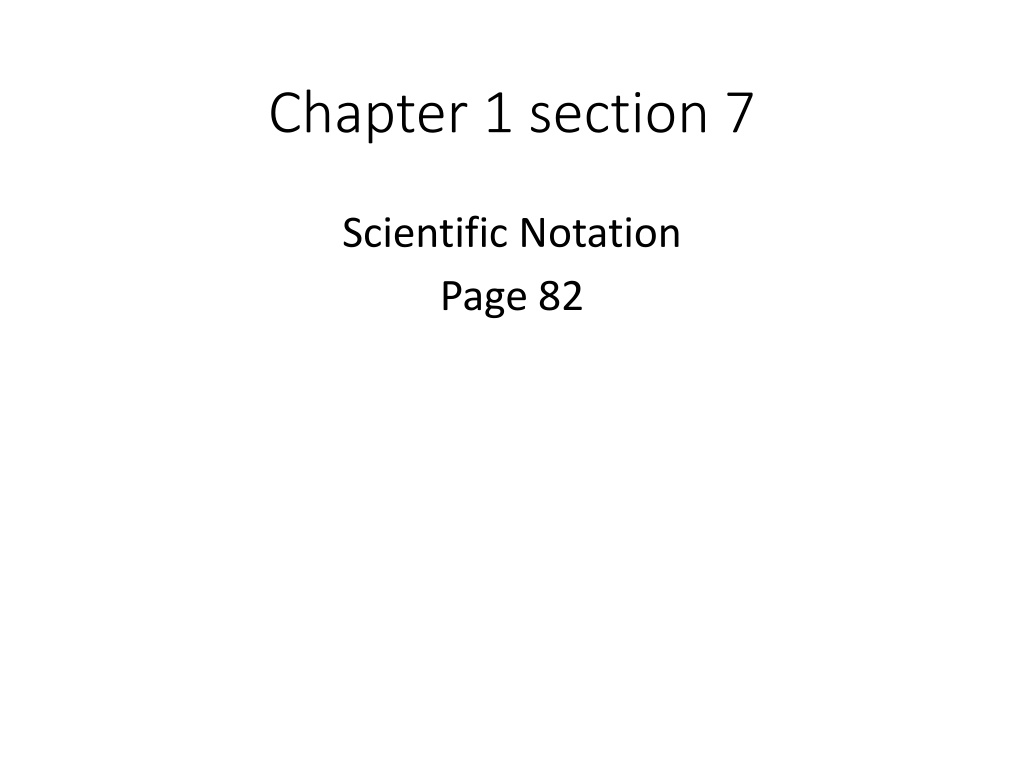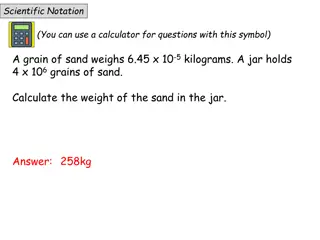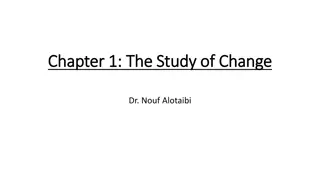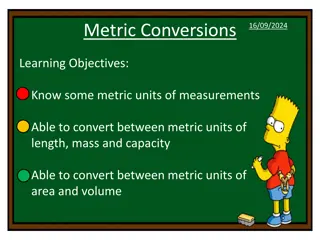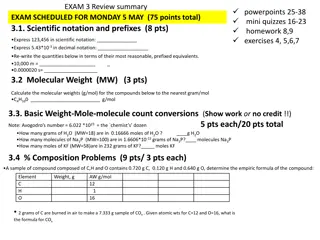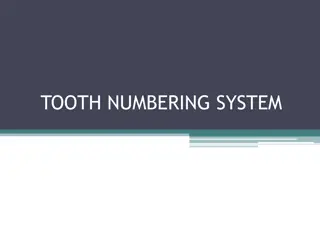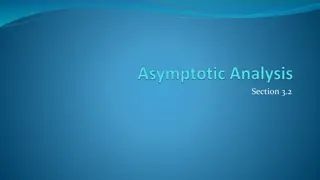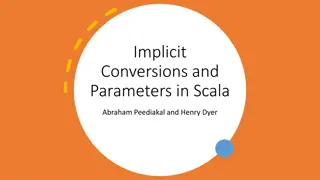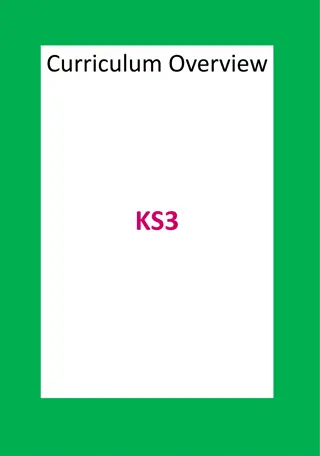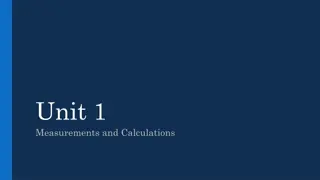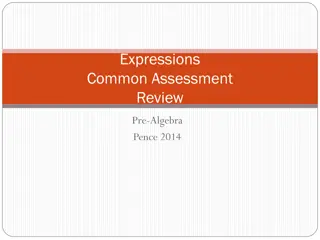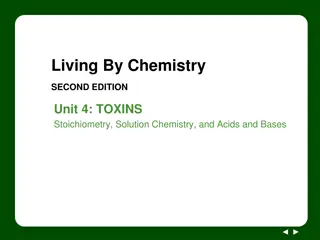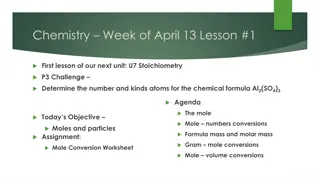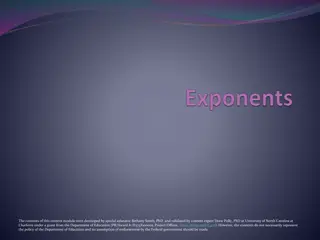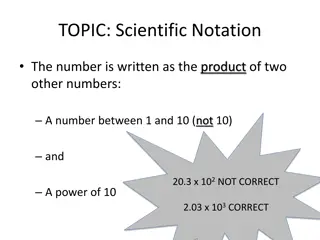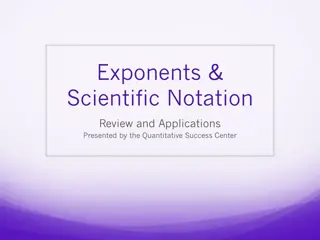Understanding Scientific Notation and Conversions
Scientific notation is a useful way to express very large or very small numbers in a concise form. This chapter discusses how to convert numbers between scientific notation and decimal notation, providing examples and explanations for better understanding.
Download Presentation

Please find below an Image/Link to download the presentation.
The content on the website is provided AS IS for your information and personal use only. It may not be sold, licensed, or shared on other websites without obtaining consent from the author. Download presentation by click this link. If you encounter any issues during the download, it is possible that the publisher has removed the file from their server.
E N D
Presentation Transcript
Chapter 1 section 7 Scientific Notation Page 82
Use Very large numbers Space flight Distance Government Budget Population Very small numbers Microbiology Virus Oxygen molecules Hydrogen atom
Scientific Notation Expressed in the form a x 10? Where the absolute value of a is greater than or equal to 1 and less than 10, ( 1 |a| < 10) and n is an integer Customary to use multiplication symbol, x, rather than a dot.
Example 6.4 x 103means 6 400 2.17 x 10-3means 0.00217 Note: numbers with a positive exponent is relatively large and number with the negative exponent is relatively small
Scientific to Decimal Notation a x 10n Use the exponent, n If positive, move the decimal point in a to the right, n places If negative, move the decimal point in a to the left |n| places.
Example Change to a decimal a) 6.2 x 107 since n = 7 is positive, move the decimal point in 6.2, 7 places to the right so 62 000 000 b) 2.019 x 10 -3 since n = -3 is negative, move the decimal point in 2.019, 3 places to the left. 0.002 019
Try. Change to decimal 1) 9.2 x 102 2) -8.17 x 106 3) -4.15 x 10-3 4) 6.8 x 10-5
Decimal to Scientific Notation 1)Write the number between 1 and 9 2)Write the power of 10. Count the number of places the decimal point moved. 3)Large number, positive exponent, small number, less than 1, negative exponent
Change to Scientific Notation a) 34,970,000 Write the number between 1 9 3.497 Count the number of places the decimal point was moved. This is the exponent: 7 places Since it is a large number, the exponent is positive so 3.497 x 107
Change to Scientific Notation 0.00000745 Write the number between 1 and 9 7.45 Count the number of decimal places that the decimal point was moved. 6 places Since the number is small, the exponent is negative 7.45 x 10-6
Change to Scientific Notation 5) 32 000 6) 0.007 7) - 0.000 000 57
Computation with Scientific Notation
Compute with Scientific Notation a) (6.1 x 105)(4 x 10-9) Solution (6.1 x 4) x (105x 10-9) 24.4 x 10 5 +(-9) 24.4 x 10-4 2.44 x 10 1x 10-4 2.44 x 10-3
Compute with Scientific Notation 1.8 ? 104 3 ? 10 2 b) 1.8 3x 104 0.6 x 104 2 0.6 x 106 6.0 x 10 1x 106 6.0 x 105 10 2
Compute with Scientific Notation 8) ( 2 x 104)(4.3 x 103) 9) (5.1 x 10- 8)(3 x 10- 4) 10) 2.4 ? 10 2 4.8 ? 106
Formula for Motion d = rt Distance equals rate times time
Motion problem Light travels at a rate of approximately 1.86 x 105 miles per second. It takes light 5 x 102seconds to travel from the sun to earth. What is the distance between earth and the sun?
Summary Decimal to scientific notation Scientific notation to decimal Computations using scientific notation
